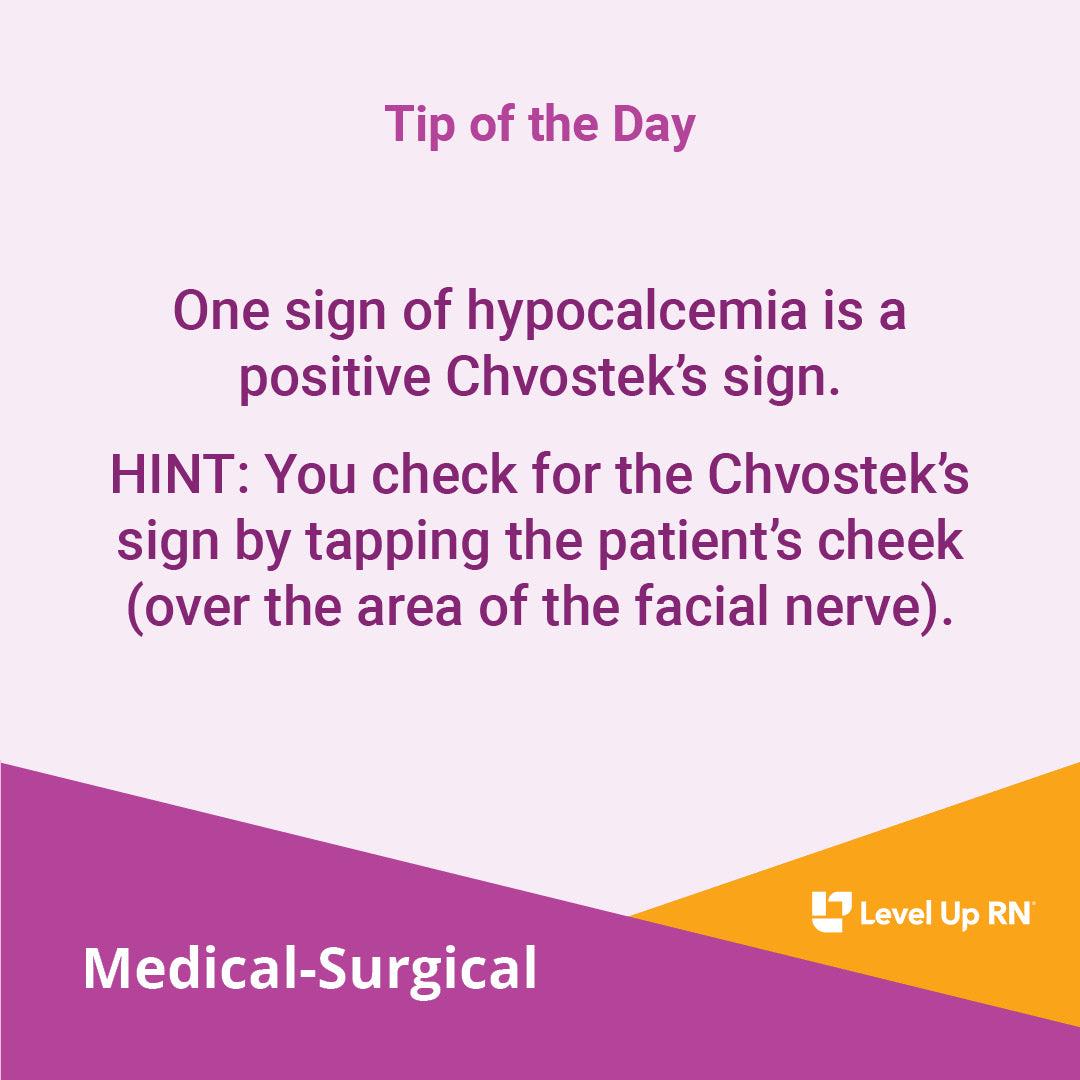What is Chvostek’s Sign?
A Chvostek’s sign is an abnormal reaction to the stimulation of the facial nerve. Tapping the facial nerve leads to twitching, typically in the nose or mouth. When a patient demonstrates a Chvostek’s sign, it is a sign that they could have hypocalcemia (low calcium).
To learn more about the signs and symptoms of hypocalcemia, check out our Medical-Surgical flashcards for nursing students.
What is hypocalcemia?
Hypocalcemia is a condition of lower-than-average levels of calcium in the blood. The normal adult value for calcium is 9 - 10.5 mg/dL, so amounts lower than 9.0 mg/dL indicate hypocalcemia. Hypocalcemia can be caused by a vitamin D deficiency, because vitamin D allows the body to absorb calcium. It can also be caused by chronic renal failure, magnesium deficiency, alcoholism and more. The treatment of hypocalcemia is based on correcting the underlying cause. If the patient is found to have a possible dysfunction of the endocrine system, such as hypoparathyroidism, they may be referred to an endocrinologist. If the hypocalcemia is due to medications or treatments, these may be altered or removed, if possible.
Hypoparathyroidism is covered in our Medical-Surgical flashcards for nursing students, the lab values for calcium levels and many more can be found in our lab values flashcards!
How do you check for Chvostek’s sign?
If you suspect that your patient is suffering from hypoparathyroidism or hypocalcemia, you can check your patient for the Chovostek's sign by tapping their cheek over the area of the facial nerve. This facial nerve can be found at a point on the face just anterior to the ear and just below the cheekbones.
What is a positive Chvostek’s sign?
A patient will exhibit a positive Chvostek’s sign when twitching of the facial muscles occur in response to tapping over the area of the facial nerve.
What is a negative Chvostek’s sign?
A negative Chvostek’s sign is when the facial nerves are stimulated and no contractions of the facial muscle occur.
Trousseau’s sign vs Chvostek’s sign
Chvostek’s sign is the twitching of facial muscles in response to tapping over the area of the facial nerve, while Trousseau’s sign is a carpopedal spasm (frequent and involuntary muscle contractions in the hands and feet) that results from ischemia (inadequate blood supply to the heart muscles), which is induced by pressure applied to the upper arm from an inflated blood pressure cuff.
Chvostek’s sign is not a perfect measure for hypocalcemia, because it is absent in about 33% of patients with hypocalcemia, and is present in about 10% of people with normal calcium levels! Trousseau’s sign, however, is a better measurement and is present in 94% of patients with hypocalcemia and in only 1% of people with normal calcium levels.
To learn more about Trousseau’s sign, check out our article on thyroidectomy.



